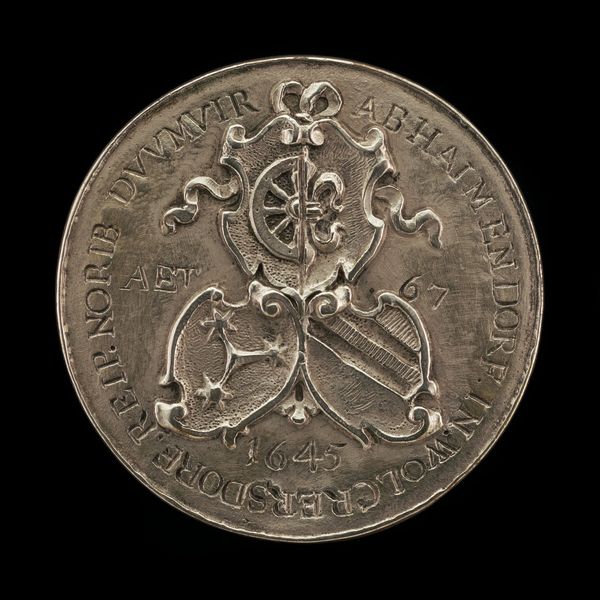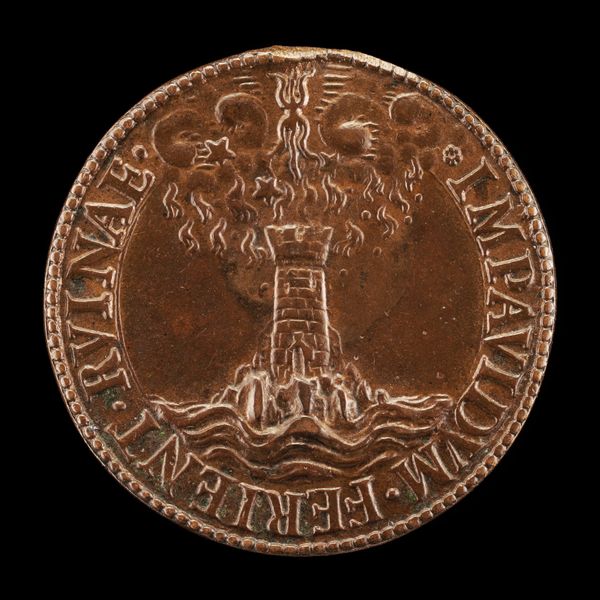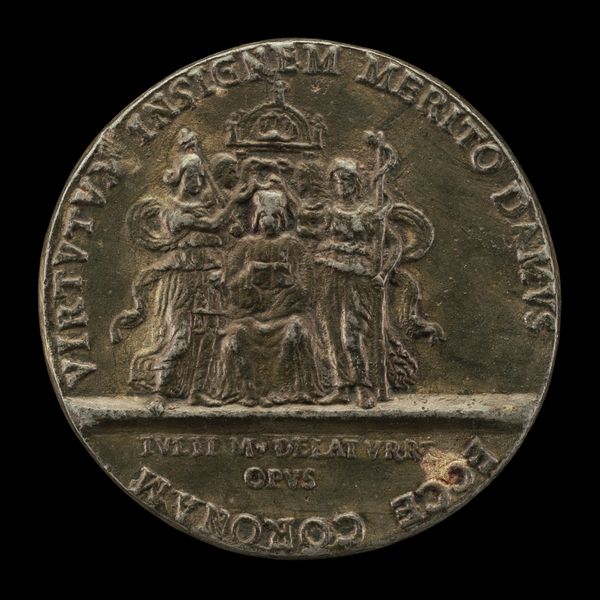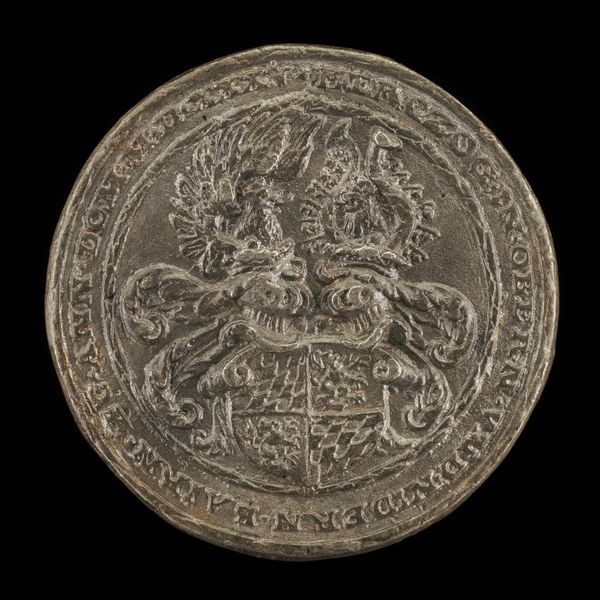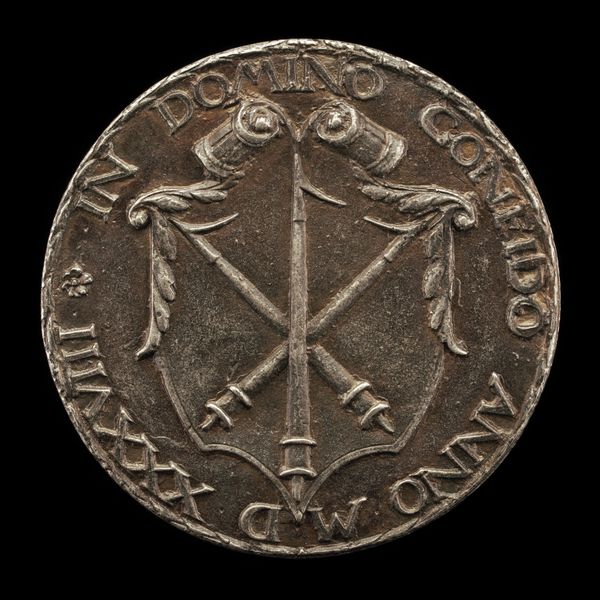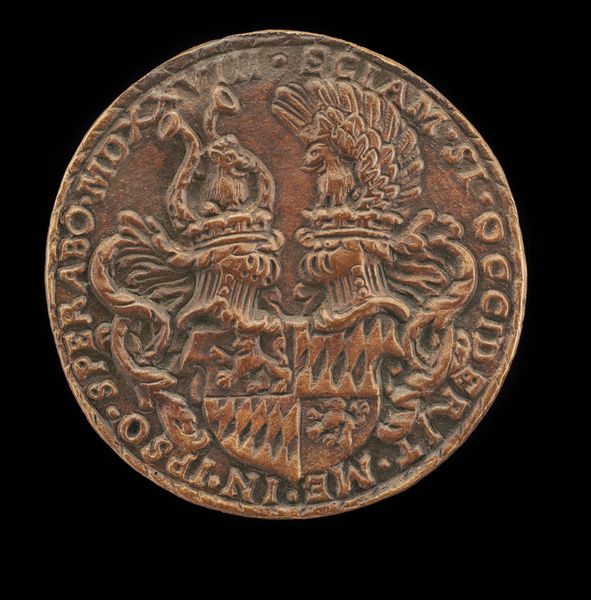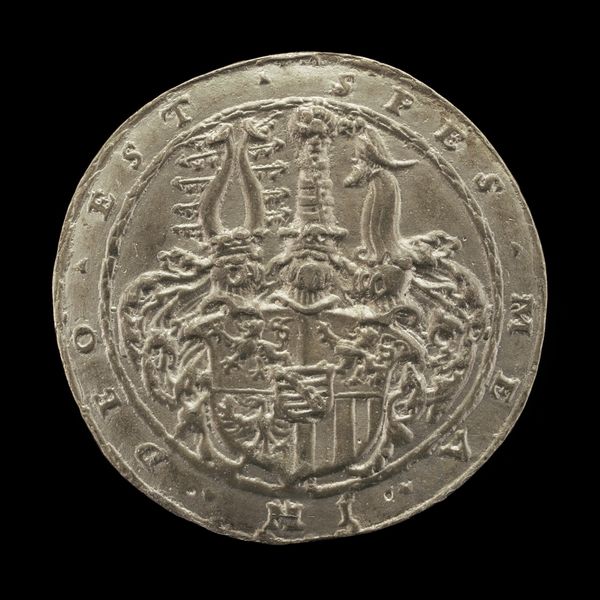![The Pillars of Hercules [reverse] by Leone Leoni](/_next/image?url=https%3A%2F%2Fd2w8kbdekdi1gv.cloudfront.net%2FeyJidWNrZXQiOiAiYXJ0ZXJhLWltYWdlcy1idWNrZXQiLCAia2V5IjogImFydHdvcmtzL2ZhYjExMDdiLTk4YWQtNDU5OC04ZWFlLTVmNmZjZDcwMDBmMy9mYWIxMTA3Yi05OGFkLTQ1OTgtOGVhZS01ZjZmY2Q3MDAwZjNfZnVsbC5qcGciLCAiZWRpdHMiOiB7InJlc2l6ZSI6IHsid2lkdGgiOiAxOTIwLCAiaGVpZ2h0IjogMTkyMCwgImZpdCI6ICJpbnNpZGUifX19&w=3840&q=75)
sculpture
#
medal
#
natural stone pattern
#
stone
#
sculpture
#
detailed texture
#
sculptural image
#
unrealistic statue
#
carved into stone
#
sculpture
#
carved
#
columned text
#
statue
Dimensions: overall (diameter): 4.2 cm (1 11/16 in.) gross weight: 33.45 gr (0.033 kg) axis: 12:00
Copyright: National Gallery of Art: CC0 1.0
This small bronze medal, designed by Leone Leoni in the 16th century, features the Pillars of Hercules. It's a cast object, meaning that molten metal was poured into a mold to achieve its final form. The process of casting bronze is itself quite ancient, requiring a complex choreography of labor. First, a model is made, then a mold, and finally, the fiery work of melting and pouring the metal. The inherent qualities of bronze – its durability and ability to capture fine detail – made it a favored material for medals like this. The crispness of the pillars, the flowing ribbons, and even the texture of the waves at the base, all speak to the skill of the artist and the possibilities of the medium. Consider, too, the social context. Leoni was a celebrated artist of his time, and bronze medals like this were often made to commemorate important people or events. They served as portable symbols of power and status, subtly circulating ideas in early modern Europe. So while this may seem like a small object, it's full of material and historical significance. It shows how even the most refined art is rooted in practical making, bridging the gap between fine art and craft.
Comments
No comments
Be the first to comment and join the conversation on the ultimate creative platform.
